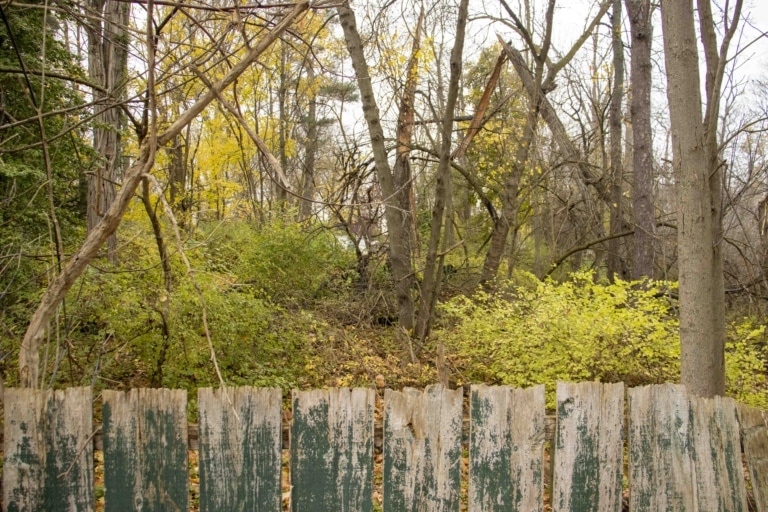But the substance is identified – and a Brock scientist calls town cleanup justifiable
Sulfate reducing bacteria.
That’s the name of the substance the town vacuumed out of the Cole municipal drain that runs from Line 5 to 6 in rural Niagara-on-the-Lake.
Back on Aug. 17, the town received a call about sewage odour and discolouration in the drain.
After the town assessed the issue, the Ministry of the Environment was contacted, as was the province’s Spills Action Centre.
Under the direction of the ministry, the town hired Accuworx to clean it up and GHD to act as an environmental consultant.
Between Accuworx, GHD and the disposal fees, the town has paid close to $1 million to clean up what it is calling a spill.
As of Sept. 2 the spill was cleaned up, according to the town’s website.
The Environmental Protection Act classifies a spill as “discharges into the natural environment that are abnormal in quality or quantity.”
Accuworx vacuumed out more than 1 million litres of the substance and it remains unclear if the town’s insurance will be covering the costs.
When The Lake Report asked chief administrative officer Marnie Cluckie what will happen if insurance doesn’t cover the spill, she declined to answer, citing legal concerns.
One thing we do know now that we didn’t before is what the substance is. So, what exactly is a sulfate reducing bacteria?
Those bacteria are “specifically micro-organisms that use sulphur for their metabolic processes,” said Vaughn Mangal, an assistant professor in the chemistry department at Brock University.
Sulphur reducing bacteria, as some people have termed it, is the same as sulfate reducing bacteria, Mangal said.
“We use oxygen to breathe, but the sulphur reducing bacteria can actually use elemental sulphur and convert it to hydrogen sulphide as part of the respiration and overall growth,” he said.
Hydrogen sulfide is known for smelling like rotten eggs, which explains the smell that came from the drain.
“At the end of the day, there is no kind of explicit health kind of problem that could come from sulphur reducing bacteria,” he said.
However, there are a few key points people need to know.
“The water gets a little bit bitter tasting as well if you’re relying on wells or groundwater inputs,” he said.
“Depending on how much sulphur reducing bacteria and how much sulphide is actually in the system, it could potentially corrode plumbing and culvert pipes,” he added.
More sulphur reducing bacteria relates to poor water quality overall, according to Mangal. That can be harmful to aquatic life due to the lack of oxygen.
Sulfate reducing bacteria also plays a huge role in the cycling of mercury in the environment, he said. This type of bacteria can convert mercury to methyl mercury, which can be toxic.
“So, the fact that there’s more sulphur reducing bacteria, to me, could mean that if this area becomes contaminated, it could be like a hotspot for the contamination for mercury, which is worrisome for myself,” he said.
Cluckie said there are two series of things going on here that people may be confused about. The first is related to the containment and cleanup of the substance.
“We had a responsibility and direction from the ministry to do the cleanup,” she said.
The town quickly tested the substance and determined it was an organic pollutant.
“And that was done very quickly so that we knew how to manage it and where to take it for disposal,” she said.
During a spill, it’s the ministry’s job to make sure the owner acts to prevent adverse effects, and to restore the natural environment, environment ministry spokesperson Gary Wheeler said in a statement.
“It is the owner’s responsibility to identify the substance to ensure appropriate disposal,” he added.
The second piece is relating to the environmental forensic investigation, which required multiple testing of different sources, said Cluckie.
“During that analysis, which was concurrent and different, we determined the sulphur reducing bacteria piece was what led to the foul smell and the black sludge-like material that was in the drain,” she said.
Over the last two months, it’s been unclear to people who exactly was in charge of the investigations.
GHD is the town’s consultant and it has been leading the ongoing investigation.
As of this week, the probe into the source is finished. A report will be sent to town council and has been shared with the ministry.
When asked if somebody was responsible for this spill, Cluckie said, “I have to wait until that has been released because that is with the ministry right now.”
Mangal said, “It almost seems like this was from a wastewater treatment plant, or some form of microbial culturing facility that was transporting the micro-organisms.”
He said it’s rare to find sulphur reducing bacteria by themselves.
“Usually, these micro-organisms like to reside where there’s no oxygen so they like hanging out in places like stream sediments and aquatic sediments. Wetlands particularly. So, the fact that it’s specifically a sulphur reducing bacteria spill is weird to me,” he said.
In August, the ministry gave the town “direction” to clean up the spill.
While this wasn’t a written order to the town, Cluckie said the town was given a verbal and written direction from the ministry.
“Given the town acted and cleaned up the spill in the public interest, the ministry did not need to order the town to clean up the spill,” Lindsay Davidson from the ministry said in an email to The Lake Report.
When we followed up asking whether the ministry would have issued an order if the town didn’t clean up the spill within the first few days, Davidson said, “Our decision to issue an order depends on all related circumstances. In this case, as mentioned before, the town cleaned up voluntarily and it would be inappropriate to speculate.”
The key word is voluntarily.
“Nope, that’s not accurate. They gave us direction,” said Cluckie.
“I mean, they didn’t issue a formal order. I think that could be where there’s confusion,” she added.
If the town didn’t follow the direction and the ministry then gave an order, the town would lose the autonomy it had when they were working collaboratively together, Cluckie said.
Comparing it to the Ministry of Labour, she said, “You would not wait if you saw a health and safety concern. You wouldn’t say I’m doing nothing.”
“You would ensure that you work with the ministry straight away,” she added.
Because the town did not receive a written or verbal order, just direction, this may be considered a voluntary clean up. It’s complicated.
Coun. Erwin Wiens is concerned the town started cleaning up something without actually knowing what it was.
Since the start, he’s been trying to get answers.
“Listen, I can tell you it’s not for lack of me trying to get answers,” he said.
As of Sept. 12, the town had spent $873,000 on the spill. The updated cost isn’t available yet and won’t be revealed until the new council is in place.
“Staff are compiling the information and then that will come to the new council,” Cluckie said.
“It might come earlier except for the fact that the election is just one week away.”
When it comes to cleaning up the spill, Mangal said he thinks what the town did was justifiable. All of the systems are connected, he said.
“Although it might not seem like a big deal in the immediate source, it could have downstream consequences that may not be as clear that you just alleviate by cleaning it up,” he added.











